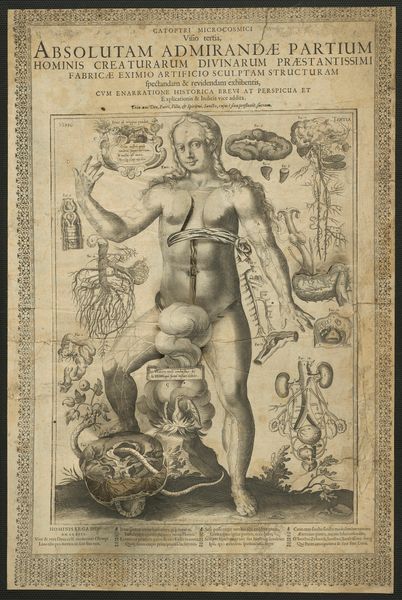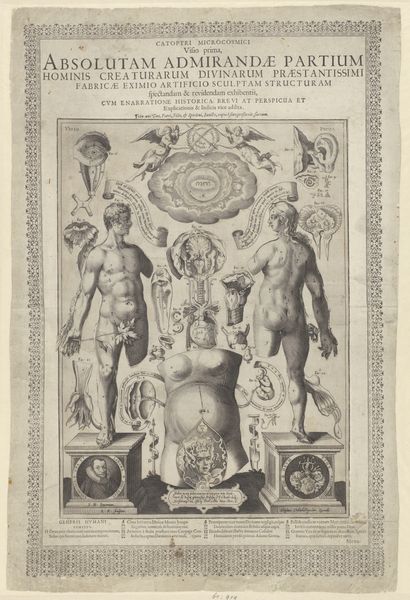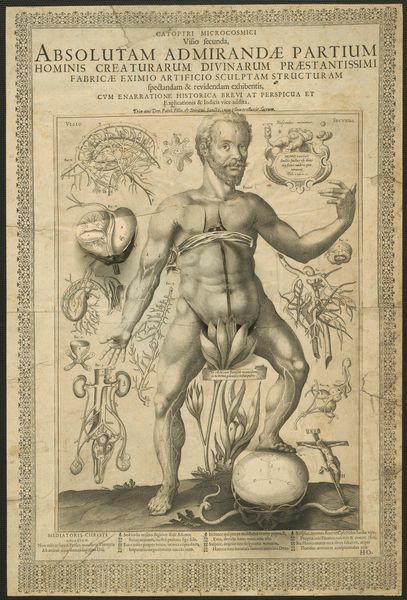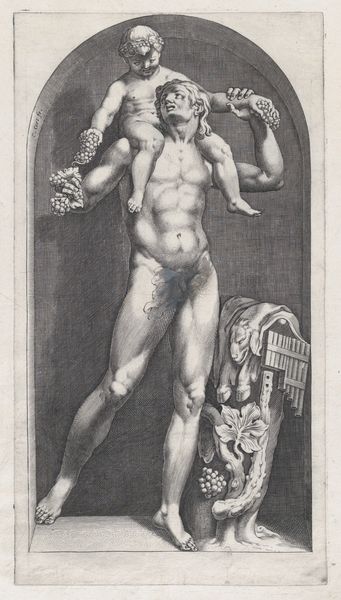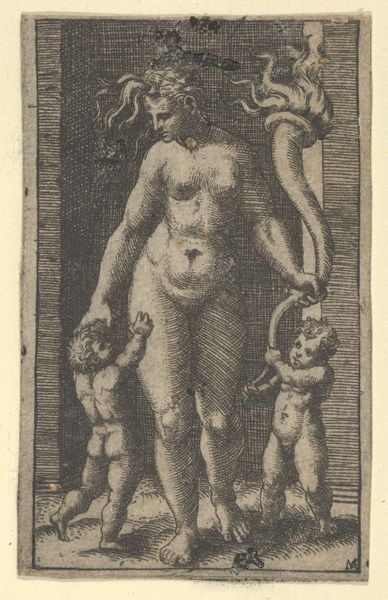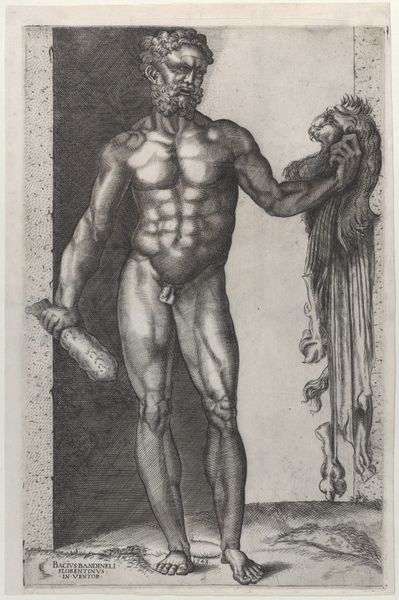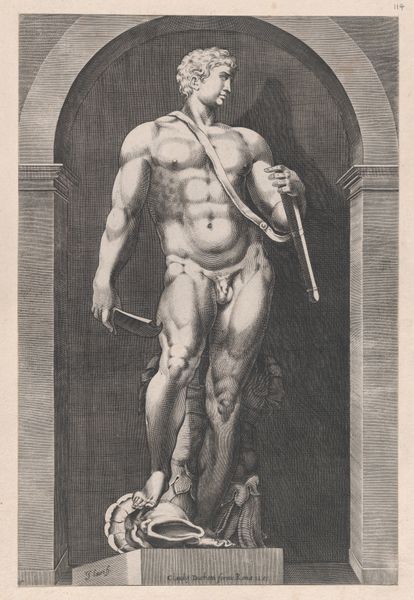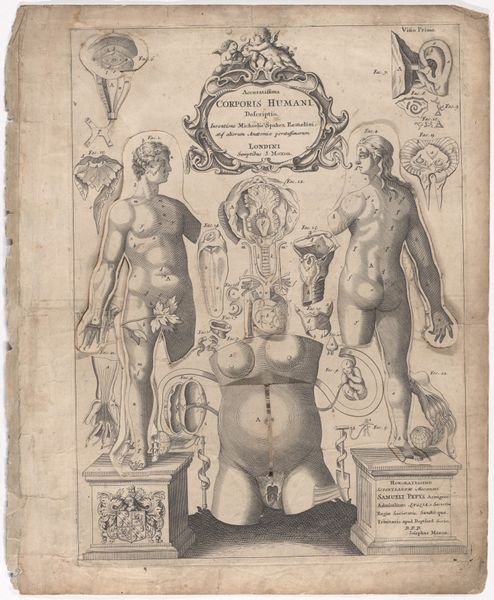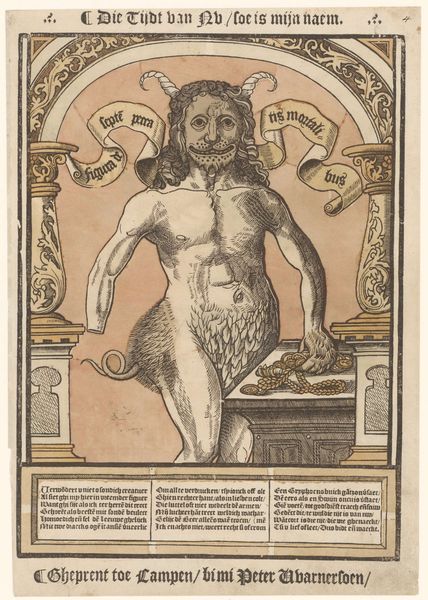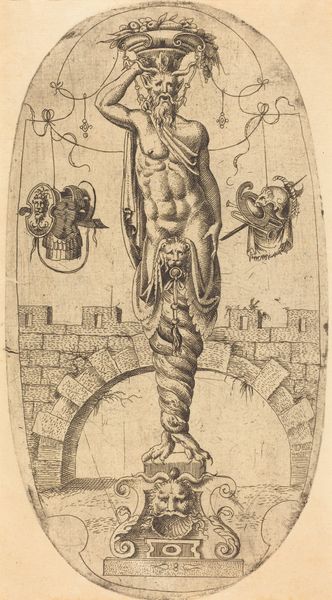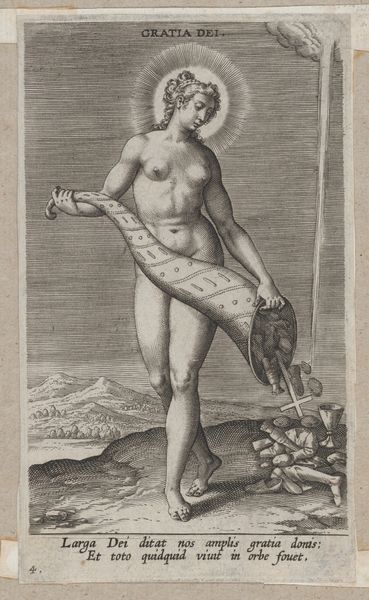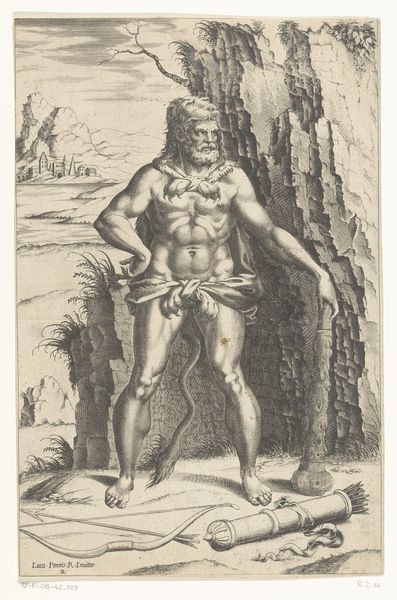
Anatomie en fysiologie van het vrouwelijk lichaam met details van de buikholte, maag, geslachtsdeel en het hoofd 1613
0:00
0:00
print, engraving
#
baroque
# print
#
old engraving style
#
figuration
#
history-painting
#
engraving
#
historical font
Dimensions: height 361 mm, width 269 mm, height 528 mm, width 358 mm
Copyright: Rijks Museum: Open Domain
Curator: This detailed print is titled "Anatomie en fysiologie van het vrouwelijk lichaam met details van de buikholte, maag, geslachtsdeel en het hoofd" by Lucas Kilian, dating back to 1613. It’s part of the Rijksmuseum collection. What are your immediate impressions? Editor: Visually striking, yet unsettling. The stark contrast of the engraving, coupled with the frank anatomical detail, produces an almost morbid fascination. There's a strong element of Baroque drama in the starkness. Curator: Indeed. The Baroque loved such intense, often contradictory imagery. Here, the depiction isn’t merely scientific; it's laced with cultural memory, reminding us of mortality but also the mysteries of the divine and of feminine power. Look at how the woman figure looms over the defeated snake and skull. Editor: Yes, I noticed the compositional arrangement. The figure is presented in a way that maximizes the interplay between figure and ground; even the font creates a sort of…horror vacui within the rectangular composition. The use of light and shadow highlights the stark anatomical renderings alongside symbolic elements like the serpent. What are your thoughts on those details? Curator: The serpent at her feet represents primal chaos, or temptation depending on one’s persuasion. Yet, by depicting it beneath the woman's foot, it subtly reframes the conventional Eve narrative, granting agency and knowledge instead of passive obedience. Editor: The gaze also reinforces this reading. Instead of a demure look of submission, the figure faces the viewer directly, in command of her knowledge and power. Her body isn't presented as mere object, but a vessel of something much more, both organic and intellectual. Curator: Precisely, it's more than simple representation of physiological details, but a potent declaration about feminine intellectual potential within the microcosm of human anatomy. The historical context is interesting; such illustrations would've been pivotal for understanding health in an age of limited scientific literacy, which is to say: empowering, though, like the anatomical style suggests, tinged by a sense of mortality and caution. Editor: It has left me wondering on the complex relation between scientific insight and social change! Thank you, it seems looking deeply at the artist’s choice and construction of images helps us decode it even now.
Comments
No comments
Be the first to comment and join the conversation on the ultimate creative platform.
